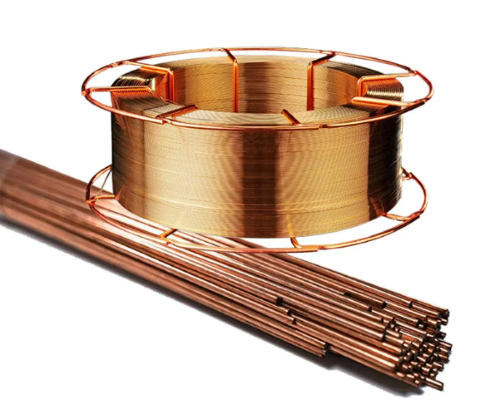What Are the Ceramic Substrate Materials Used in Electronic Packaging?
In the process of electronic packaging, the substrate mainly plays the role of mechanical support protection and electrical interconnection (insulation). With the development of electronic packaging technology towards miniaturization, high density, multi-function, and high reliability, the power density of the electronic system increases, and the heat dissipation problem become more and more serious. There are many factors influencing the heat dissipation of devices, among which the selection of substrate materials is also a key link.
Currently, there are four main types of substrate materials commonly used in electronic packaging: a polymer substrate; a metal substrate; a composite substrate; ceramic substrates. The ceramic substrate material is widely used in electronic packaging substrate for its advantages such as high strength, good insulation, good thermal conductivity and heat resistance, small thermal expansion coefficient and good chemical stability.
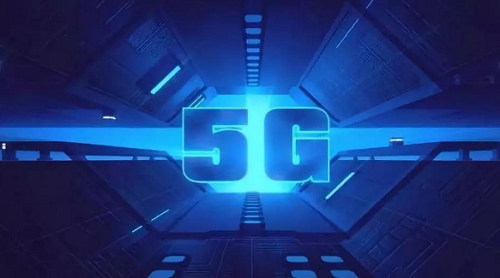
Ceramic packaging substrate materials mainly include aluminum oxide, beryllium oxide, and aluminum nitride. At present, alumina ceramic is the most mature ceramic packaging material, which is widely used for its good thermal shock resistance and electrical insulation, and mature manufacturing and processing technology.
The United States, Japan, and other countries have developed a multilayer ceramic substrate, making it a widely used high-tech ceramics. At present, the ceramic substrate materials used include alumina, beryllium oxide, aluminum nitride, silicon carbide, and mullite.
In terms of structure and manufacturing process, ceramic substrates can be divided into high-temperature co-firing multi-layer ceramic substrates, low-temperature co-firing ceramic substrates, thick film ceramic substrates, etc.
High-Temperature Co-Fired Ceramic (HTCC)
Ceramic powder (silicon nitride powder, alumina powder, aluminum nitride powder) was first added into the organic binder, mixed evenly into paste; then the slurry is scraped into sheets with a scraper, and the slurry is formed into green slurry through the drying process; then drill the through hole according to the design of each layer, and use screen printing metal paste for wiring and hole filling; finally put the green layer overlay and at high temperature furnace (1600 ℃) for sintering.
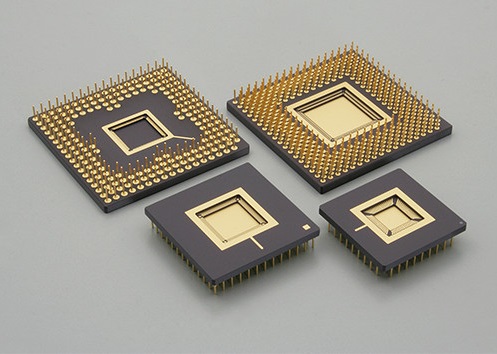
Due to the high sintering temperature, the choice of metal conductor materials is limited (mainly tungsten, molybdenum, manganese and other metals with a high melting point but poor electrical conductivity). The production cost of the high-temperature co-fired ceramic substrate is high, and its thermal conductivity is generally in the 20 ~ 200 W/(m•℃) (depending on the ceramic powder composition and purity).
Low-Temperature Co-Fired Ceramic (LTCC)
The preparation process of low temperature co-firing ceramic substrate is similar to that of high-temperature co-firing multilayer ceramic substrate. The difference lies in the low temperature co-firing ceramic substrates in the alumina powder mixed with mass fraction 30% - 30% of the low melting point glass materials, lower the sintering temperature to 850 ~ 900 ℃. Therefore, gold and silver with good conductivity can be used as electrodes and wiring materials.
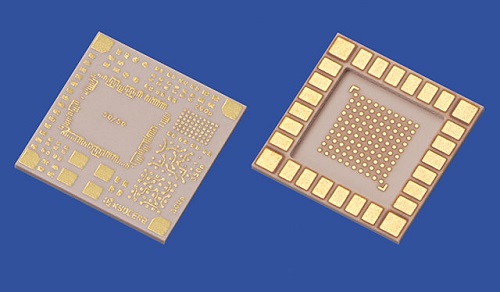
However, on the other hand, the composite thermal conductivity is only 2~3w/(m•℃) since the low temperature co-firing ceramic substrate glass phase is contained in the ceramic material. Besides,since the low temperature co-firing ceramic substrate adopts the screen printing technology to make the metal circuit, the alignment error may be caused by the net problem; Furthermore, the shrinkage ratio of multilayer ceramic laminated sintering is different, which affects the yield.
In practical production, thermal or conductive holes can be added in the patch area to improve the thermal conductivity of the low-temperature co-fired ceramic substrate, but the disadvantage is that the cost will increase. In order to expand the application field of the ceramic substrate, multilayer laminating and co-firing technology are generally adapted to produce a multilayer structure with the cavity, which meets the requirements of airtight encapsulation of electronic devices and is widely used in the fields with a harsh environment such as aerospace and high-reliability requirements such as optical communication.
Thick film ceramic substrate
Compared with high-temperature co-firing multilayer ceramic substrate and low temperature co-firing ceramic substrate, thick film ceramic substrate is a post-fired ceramic substrate. The preparation process is to coat the metal paste on the surface of the ceramic substrate with the screen printing technology firstly, they can be prepared after drying and high-temperature sintering (700 ~ 800 ℃).
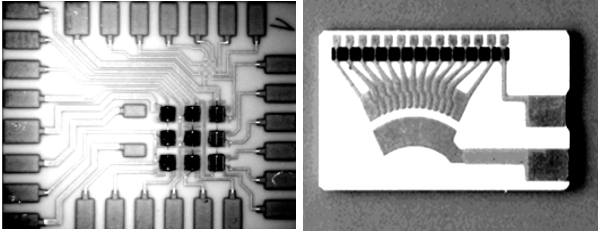
Metal pastes are generally composed of metal powders, organic resins, and glass powders. The thickness of the sintered metal layer is 10~20μm with a minimum line width of 0.3mm. Due to mature technology, simple process and low cost, thick film ceramic substrate has been applied in electronic packaging with low requirements for graphic accuracy.


